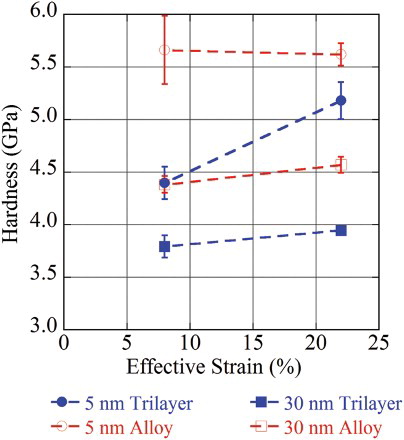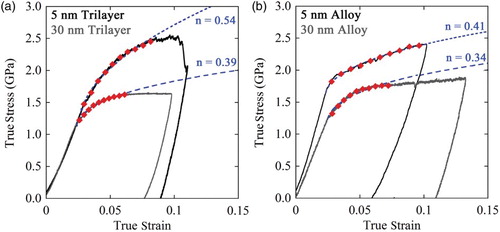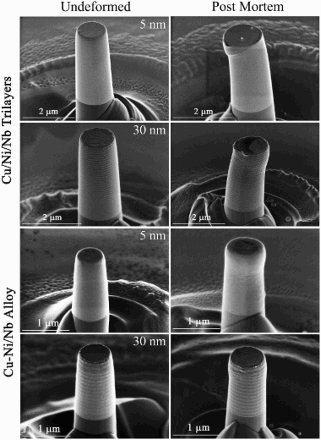Figures & data
Figure 1. Hardness measurements from nanoindentation experiments conducted using a Berkovich tip (effective strain 8%) and cube-corner tip (effective strain 22%), approximating the hardening response of multilayer films with mixed interfaces (tri-layer) and incoherent interfaces (alloy).

Figure 2. Representative stress–strain curves from micro-pillar compression testing of NMMs for (a) tri-layer (mixed interfaces) and (b) the bi-layer alloy (incoherent interface only) films.

Table 1. Strength- and work-hardening summary for tri-layer and alloy films tested using micro-pillar compression and nanoindentation.
Figure 3. Undeformed (left) and post mortem (right) pillars of mixed interface tri-layer films and incoherent interface alloy films showing difference in deformation as a result of interface type and layer thickness.

